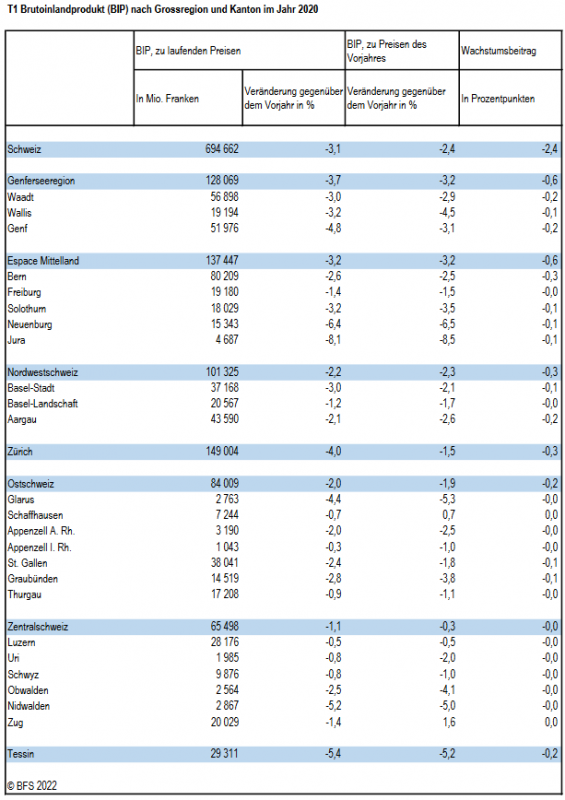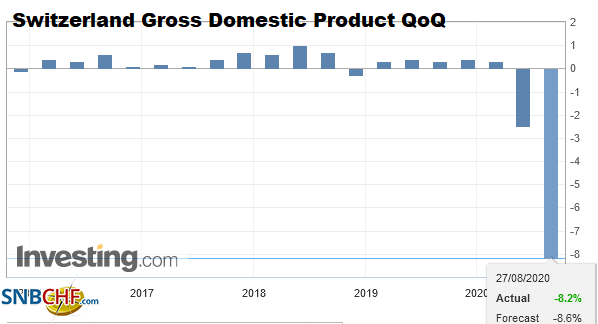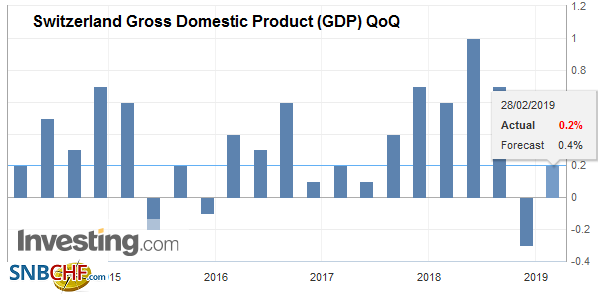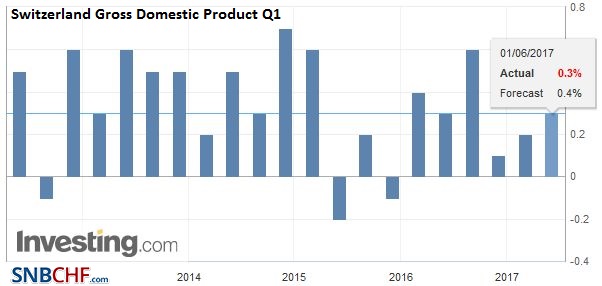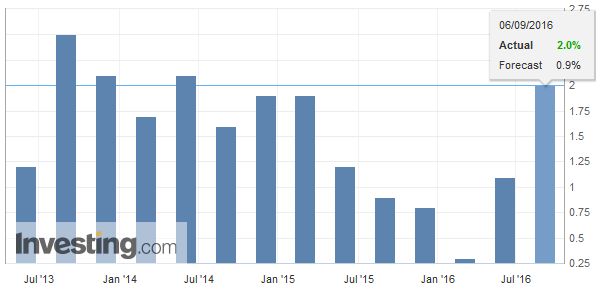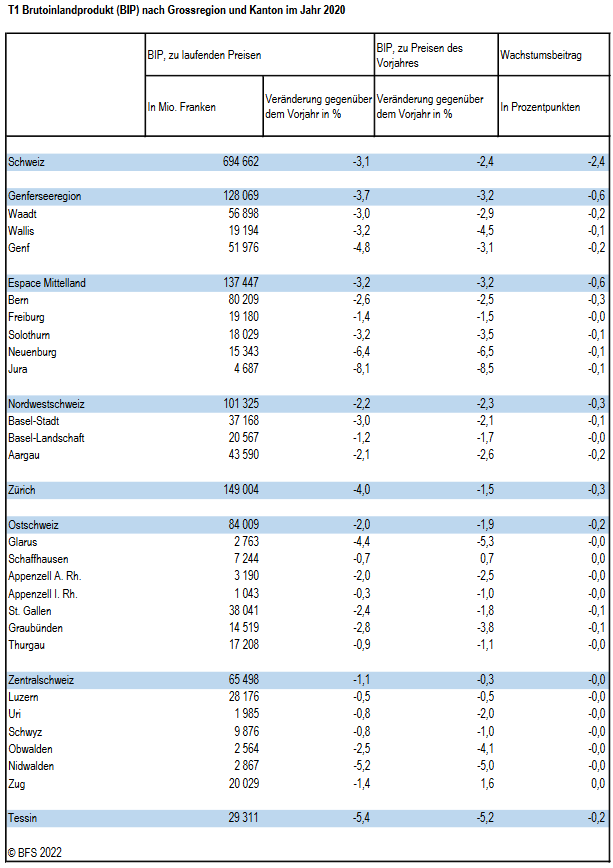2020 was marked by the COVID-19 pandemic, which affected the entire regional economic fabric in Switzerland. National growth in gross domestic product (GDP) fell to –2.4% at the previous year's prices and almost all cantons recorded a decline in activity. Jura was the most affected (–8.5%), followed by Neuchâtel (–6.5%), Glarus (–5.3%) and Ticino (–5.2%).
Read More »
Tag Archive: Switzerland Gross Domestic Product QoQ
Switzerland GDP Q2 2020: -8.2 percent QoQ, -9.3 percent YoY
Switzerland’s GDP fell by –8.2 % in the 2nd quarter of 2020, after decreasing by –2.5 % (revised) in the previous quarter.* Domestic economic activity was severely restricted in the wake of the pandemic and the measures are taken to contain it. The global economy also plunged into a sharp recession. However, Switzerland’s GDP decline remained limited in an international comparison.
Read More »
Read More »
Switzerland GDP Q4 2018: +0.2 percent QoQ, +1.4 percent YoY
Switzerland’s GDP rose by 0.2% in the fourth quarter of 2018. Manufacturing saw dynamic growth. Concurrently, exports of goods increased significantly. In contrast, domestic demand stagnated. GDP growth was 2.5% for 2018 as a whole.
Read More »
Read More »
Switzerland GDP Q3 2018: -0.2 percent QoQ, +2.4 percent YoY
Switzerland's GDP fell by 0.2% in the 3rd quarter of 2018 due to both the industrial and service sectors. On the expenditure side, domestic demand and foreign trade had a negative impact. Switzerland’s GDP fell by 0.2% in the 3rd quarter of 2018, after climbing by 0.7% in the previous quarter.
Read More »
Read More »
Switzerland GDP Q1 2017: +0.3 percent QoQ, +1.1 percent YoY
Switzerland’s real gross domestic product (GDP) grew by 0.3 % in the first quarter of 2017*. Private consumption growth expanded only slightly, while government consumption rose moderately. Following the previous quarter’s fall, investment in construction and equipment increased.
Read More »
Read More »
Swiss Q2 GDP: +0.6 percent QoQ, +2.0 percent YoY
Each quarter, the SECO estimates the GDP and its components. The main purpose of these estimations is to provide data that allow for an assessment of the cyclical development of the main macroeconomic aggregats in a timely adequate and credible manner.
Read More »
Read More »









